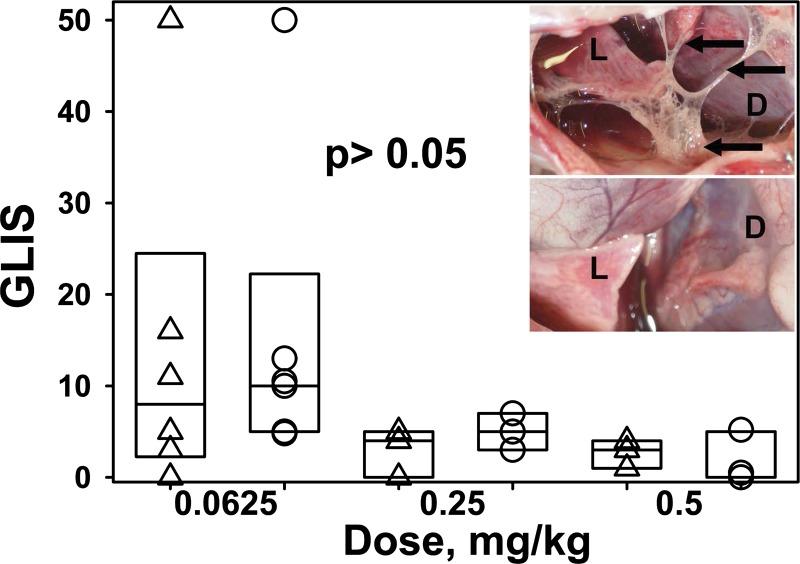Fig. 3.
Prourokinase with 179RHRGGS184→179AAAAAA184 substitutions (ΔDS-scuPA) and wild-type prourokinase (wt-scuPA) are equally effective in intrapleural fibrinolytic therapy (IPFT) of tetracycline (TCN)-induced pleural injury in rabbits. The efficacy of IPFT was determined by gross lung injury score (GLIS; 25, 48), in the treatment of TCN-induced pleural injury with (from left to right) 0.0625 (n = 6), 0.25 (n = 3), and 0.5 (n = 3) mg/kg ΔDS-scuPA (△) and wt-scuPA (○). IPFT was considered successful with a GLIS ≤ 10. Animals were euthanized 24 h after initiating IPFT (72 h after TCN-induced pleural injury). Inset: photographic images of the pleural space taken at 24 h after unsuccessful (top; GLIS = 16) and successful (bottom; GLIS = 0) IPFT with the same dose of ΔDS-scuPA (0.0625 mg/kg). L, lung; D, diaphragm; arrows in the image at top indicate fibrin net and strands. The data are presented as box plots (showing interquartile ranges). There was no statistically significant difference (P > 0.05) in treatment outcomes (GLIS) between ΔDS-scuPA and wt-scuPA at the same dose.

